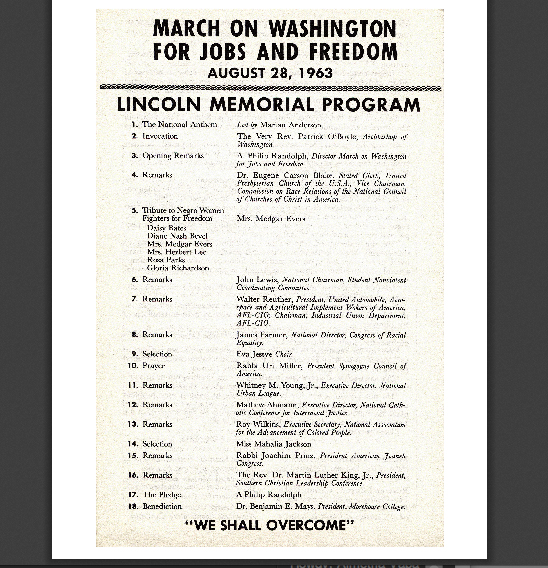This month marks the anniversary of the 1963 March on Washington for Jobs and Freedom and will be commemorated by teachers and students across the United States and around the world. Help your students appreciate the significance of this event – and its role in the larger Civil Rights Movement using PBS LearningMedia’s collection of digital content. Get started with the featured resources below:
March on Washington, Flyers | Primary Source Document | Grades 3-12
In August of 1963, more than 200,000 activists from all over the country gathered for the March on Washington for Jobs and Freedom. The day was filled with speeches, musical performances, and the declaration of political platforms, whose common theme was racial equality in America. The largest demonstration in American history to that date, it marked the apex of the Civil Rights movement. These flyers document the speakers and issues that pressured President John F. Kennedy to draft legislation guaranteeing equal rights for African Americans.
Civil Rights Collection | Media Gallery | Grades 6-12
In 1954, the Supreme Court’s landmark ruling in Brown v. Board of Education declared segregated schools unconstitutional and sparkeda decade of groundbreaking civil rights activism and legislation.Using archival news footage, primary sources, and interview segments filmed for Eyes on the Prize, this collection captures the voices,images, and events of the Civil Rights movement and the ongoing struggle for racial equality in America.
March on Washington, Program | Primary Source Document | Grades 6-13+
This program listed the events scheduled at the Lincoln Memorial during the August 28, 1963, March on Washington for Jobs and Freedom. The highlight of the march, which attracted 250,000 people, was Martin Luther King’s “I Have a Dream” speech. This resource group includes 2 primary source images, a background essay and a transcript.
